Italy is one of the major fashion hubs in the world. The fashion throughout this country has been growing immensely since the Italian Renaissance. Fashion trends always rely on other things like politics and the culture of the time period. If it weren’t for this time period, I’m not sure if Italian fashion would be as big as it is today.

The Renaissance
Before I dive into talking about this time period, it is important to have some backstory if you are not familiar. The Italian Renaissance dates from around 1400 to 1600. Art, music, fashion, and philosophy grew into a new normal for Italian citizens. Fashion was extremely influenced by Italian artists like Michelangelo, Raphael, Giovanni Moroni, and Leonardo Da Vinci. The art that these artists produced, quite literally, painted a picture for the next steps in Italian fashion. These paintings were often very luxurious and elegant, which reflects what many men and women wore during the Renaissance. The style of the art during this time period was mainly realism – which is painting how things are really seen. There was no exaggeration in the humans painted which was why it was such a reflection of the fashion that came to be.
Artists often painted men and women in silk or velvet clothing which made these textiles extremely popular at the time. Many of the major cities like Milan, Rome, and Naples were well known for making these textiles (silk and velvet) as well as wool. These textiles were also extremely expensive to make and buy on the consumer side. The Medici Family really set off these trends because they were so wealthy and were able to afford buying the extravagant pieces.
People also became very aware of themselves and how they looked because during this time period was when mirrors were invented, so they were constantly checking in on how they were seen by others in mirrors.
Women’s Fashion During the Renaissance
Women shifted to a layered V-neck with gathered/pleated skirts. The highlight of the silhouette would always be the waist – extremely small – and then a bigger bust on the top. The bottom half of a woman was to be bigger than the rest of her body, looking full with large and luxurious skirts resembling a bell. Layering was important to women at the time, not comfortability. Their sleeves were often puffed and lined with fur and tops were usually 3-5 layers. Moving onto shoes, heels were only worn for the purpose of keeping their long skirts from dragging on the floor when walking outside, not for fashion.
Their fashion also extended out to hairstyles and headdresses. Hairstyles were often done based on their marital status. If a woman was single she would wear her hair in curls and it would be down. If a woman was married she would wear her hair up and in braids. They also utilized beautiful accessories to dress up their look. Netting was popular to keep the hair flat or together and sometimes the netting would be decorated with beading or ribbon. Ribbon was another popular textile since this was used a lot to tie up hair or braid it.
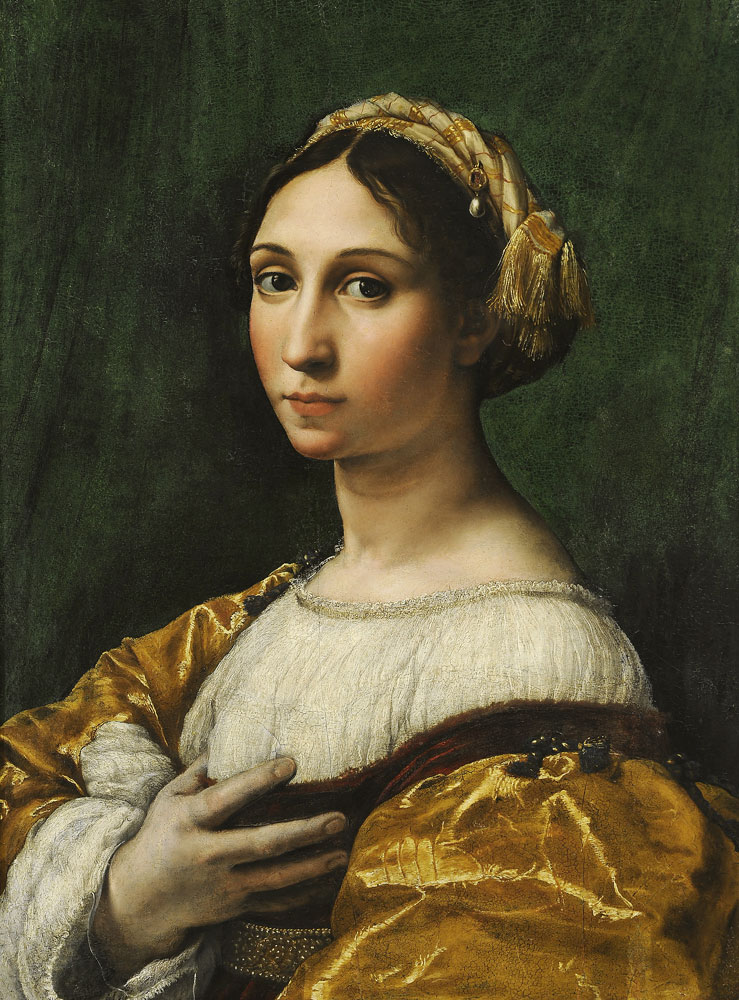
As you can see in, Portrait of a Young Woman, by Raphael, this woman is wearing a layered top with puffed sleeves and has her hair in braids wrapped in ribbon. She looks elegant with the silk sleeves and beading around her waist.
Source: Wikipedia
The Birth of Venus, by Sandro Botticelli, is luxuriously created showing off what women usually wore on the right with their long hair as almost a focal point.
Source: Wikipedia
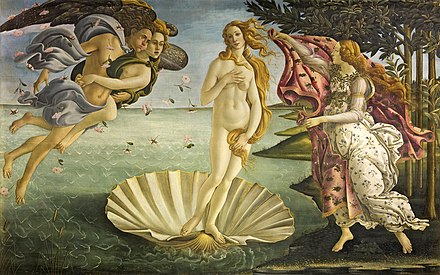
Men’s Fashion During the Renaissance
Similar to women, men wanted to emphasize the lower half of their bodies as well. They were able to do this with tights (hose) and wore large coats with puffy sleeves to really show more emphasis down below. They would wear waistcoats and overcoats (giornea) which would typically have detachable sleeves so they could style and mismatch them with any outfit they wanted. Men really wanted to wear more fitting clothes, as opposed to women, to show off their figure shape. Men were often seen wearing flat shoes with (or without) a pointed toe. They also had other accessories like satchels, hats, or gloves.
Men also liked to wear things on their heads to elevate their look. They wore bonnets, flat caps, and berets which were usually made of velvet or felt textiles. Those that were wealthier would wear bonnets made out of satin, felt, or thin silk (scarceness). These hats would be decorated with feathers, buttons, jewels or rings to continue with this elegant theme of fashion sense. As for their hairstyles, they were usually seen wearing a straight bob with bangs and a completely shaved face. Bald men were interested in wearing wigs made of real hair or silk to conceal the fact that they had no hair, especially during bigger occasions.

The Man in Pink, by Giovanni Moroni, is a perfect depiction of what men wore during this time. You can see the hose and the flat shoes and the waistcoat with matching sleeves. It also looks like he is holding a hat with some feather decoration on top.
Source: Design & Art Magazine
Young Man Seated Under a Tree, by Isaac Oliver, is another great example of the clothing during this time period. You can see that the tights and flat shoes are the focus of his figure. In this painting this young man has the short bob and is dressing up his look with the black top hat.
Source: Artsy.net
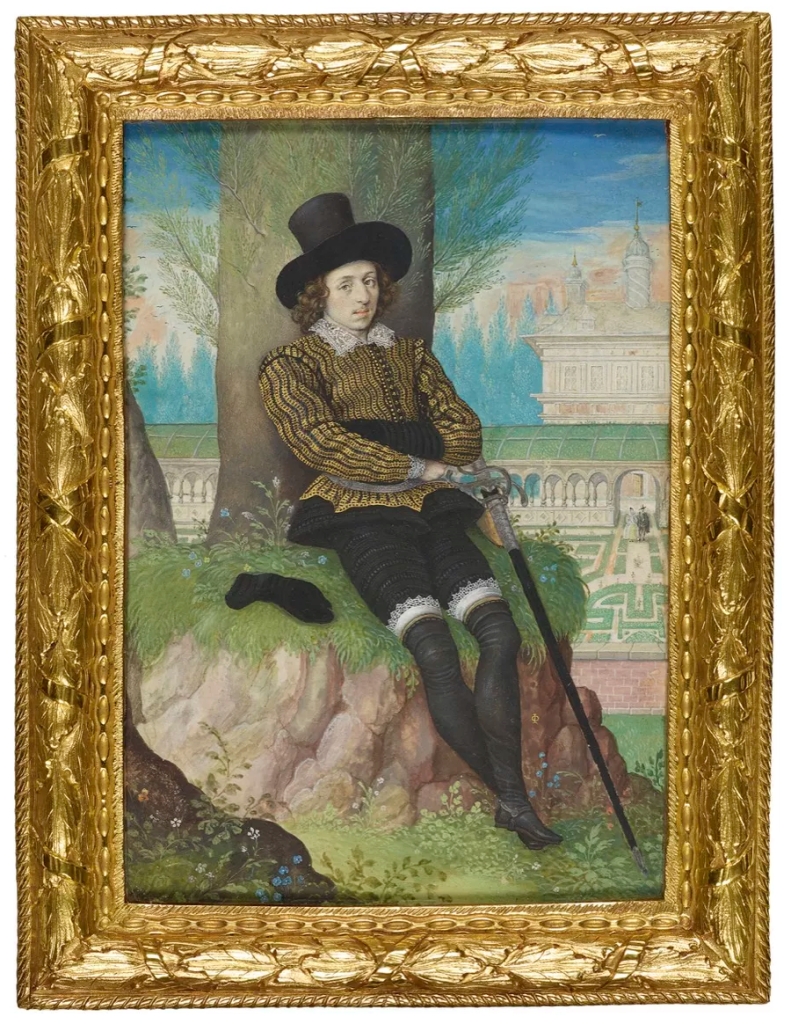
Children’s Fashion During the Renaissance
Children were dressed to resemble adults pretty much as soon as possible. Mothers wanted their daughters to dress like them and fathers wanted their sons to dress like them as well. Since children don’t develop their figures until much later in their lives, there was an emphasis on the center of their bodies, especially in girls. Girls’ outfits were usually elaborate and floral with bigger skirts on the bottom similar to their mothers. Necklaces with pendants were a common accessory in children’s wear as they would tuck it under their tops. It is also quite interesting to mention that parents liked to dress their siblings to match each other, but in their own ways.
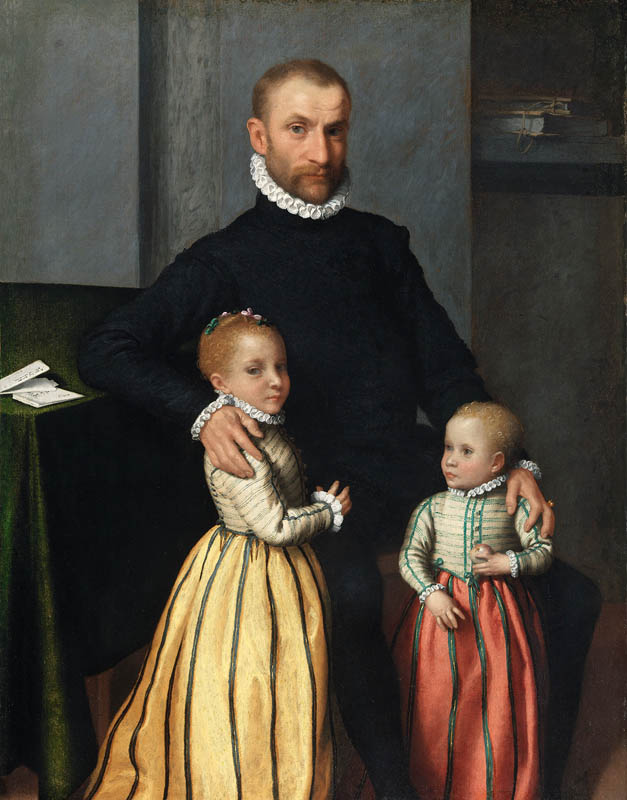
In the, Portrait of a Gentleman and His Two Children, by Giovanni Moroni, you can see that the children follow suit in what the mother wears with a big skirt and long, big sleeves. It is also showing the similarity between the siblings being dressed the same.
Source: FIT Fashion History Timeline
Italian Fashion in Women Today
In an interview conducted by Vogue Italia, Vogue asked women in the fashion industry how they would describe it. Italian women still dress in silk and aim for elegance, but they want it to look effortless. Women want to show off their shape, avoiding oversized clothing. They are seen wearing a lot of more expensive textiles like cashmere and wool. Italian’s care about a more simplistic but luxurious look. It’s minimalistic but with accessories like purses or jewelry and always with a coat or blazer over their outfit. Almost everyone being interviewed mentioned that outerwear is important in the Italian fashion industry. Women like to dress up their minimalistic outfits with perfectly matching outerwear, but always remembering to keep it simple. They tend to stay away from louder and abstract styles, although they do play around with different colors.
It seems like they really focus on having staple items in their closet rather than just buying fads. They are also focused on quality and buying items that are made in Italy rather than in another company. Italians like to know where their pieces come from and keep in mind company values when purchasing clothing which I think is really the entire essence of Italian culture.

This is a perfect example of the elegance and simplicity that Italian women strive for. This woman is showing off the neutral colors, beige and white, with simple jewelry and a sweater worn over her shoulders as an accessory.
Source: Lookiero Blog
This is another great example of how a minimal but put together look can say and show a lot. The staple blazer is consistent in Italian trends as well as simple gold jewelry and a handbag for accessories. This woman is also wearing statement sunglasses, pulling her outfit all together!
Source: Elle Canada
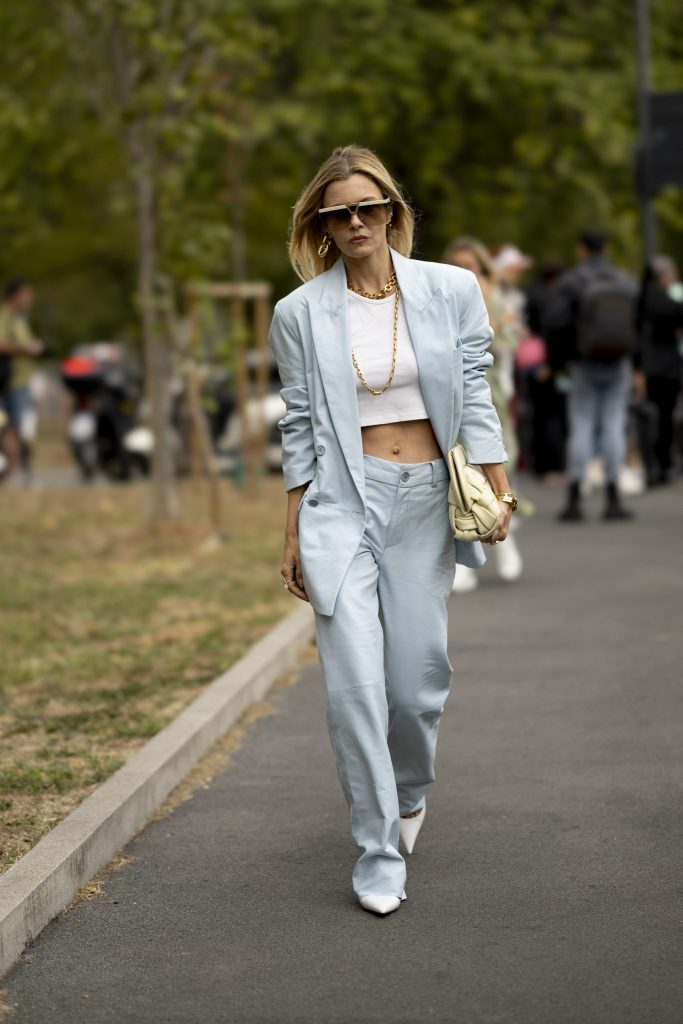
Italian Fashion in Men Today
Italian men seem to have grown away from wearing tights and creating a different focal point for themselves. Continuing with this theme of elegance and luxury, this is what men strive for. They commonly wear a muted color palette (very desaturated colors). Like women they are interested in a minimal and effortless look. They are usually seen wearing blazers, suits, button downs and chinos. They are also fans of nicer textiles like silk and cashmere. Men have carried the flat shoe (loafers) from the Renaissance to today’s looks. Italian men also like to accessorize their outfits with jewelry and sunglasses to elevate their look to be more luxurious, but remembering to keep it effortless.
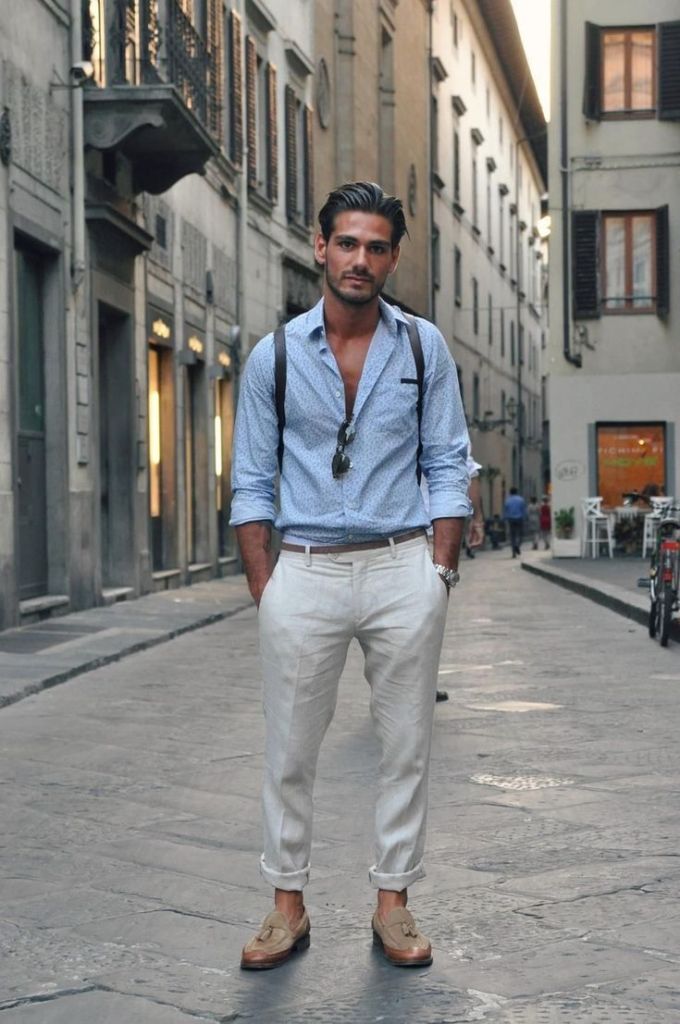
I think this man is a great depiction of the Italian fashion trend amongst men. You can see that he is wearing quiet colors and looks very effortless. He accessorized with sunglasses, a watch, and a backpack to elevate it into a more tasteful outfit.
Source: Pinterest

Comparing Then & Now
As you can see fashion has come a long way since the Italian Renaissance, for women specifically. They started out with large, elegant figures and toned down to a minimalistic but still elegant look. The theme of elegance has pushed through many centuries and still has a hold on how men and women dress in Italy today. The Renaissance is rarely talked about, but it is such a key thing to remember when considering where these fashion trends came from.
Sources
Allaire, C. (2023, September 21). You know French-Girl Style—Now get to know Italian-Girl style. Vogue. https://www.vogue.com/article/italy-girl-style-milan-fashion-week
De Young, J. (n.d.). 1570-1579 | Fashion History Timeline. Fashion History Timeline. https://fashionhistory.fitnyc.edu/1570-1579/
History of Italian fashion. (n.d.). Wikiwand. https://www.wikiwand.com/en/History_of_Italian_fashion#Renaissance
How to dress like a fashionable Italian man – OnPointFresh. (n.d.). https://onpointfresh.com/how-to-dress-italian/


Leave a comment